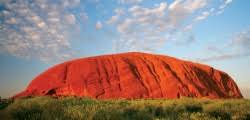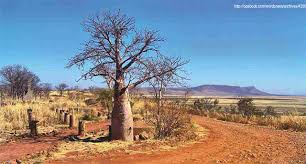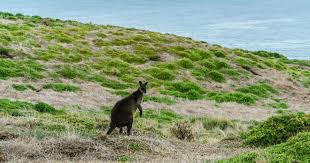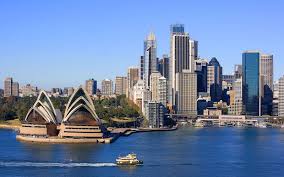Australia. La Perouse
 Not far from Sydney on the coast, in the area of Botany Bay, stands a high stone stele. It was erected in honor of the great French navigator Jean Francois Gallo de Laperouse. But what is the connection between him and Australia? The fact is that after Laperouse sailed from these shores in January 1788, no one else saw him alive. The brave French captain disappeared forever, although further, frankly, not very active searches and gave some information about what could happen to him.
Not far from Sydney on the coast, in the area of Botany Bay, stands a high stone stele. It was erected in honor of the great French navigator Jean Francois Gallo de Laperouse. But what is the connection between him and Australia? The fact is that after Laperouse sailed from these shores in January 1788, no one else saw him alive. The brave French captain disappeared forever, although further, frankly, not very active searches and gave some information about what could happen to him.
The first European researchers found in Australia neither silver, nor gold, nor spices, nor other useful things. At first glance, this southern land in the Pacific was completely useless. James Cook, who joined New South Wales to the British crown, did not even find fresh water here. At first, he generally decided that this continent was unsuitable for life. Nevertheless, to assume that on such a vast territory there is nothing at all useful would be unforgivable stupidity. It is not surprising, therefore, that the French began to show a clear interest in the newly discovered lands. The issue of the colonization of Australia took on a fundamental character. Suddenly, the British found a simple solution: they began to send criminals and convicts here.
After months of sailing, the first English fleet with prisoners aboard moored on the shores of Australia. The official opening of the colony took place on February 7, 1788 with the solemn raising of the British flag.
The first governor, Sir Arthur Phillip, did not have time to settle in the first city of the new colony of Sydney, as the first guests had already visited him. In fact, the city had not yet existed when two French ships Bussol and Astrolabe approached the shores of Botany Bay. It was none other than Jean Francois Gallo de Laperouz in person. The French were surprised at this meeting no less than the British. They did not expect to find anyone here except the Aboriginal people described in detail in their report by Captain Cook. What led the French ships to these shores?
By the age of forty, Laperouz had reached the pinnacle of a naval officer. Participation in eighteen campaigns, mostly against England, earned him the fame of a brave and experienced sea wolf. It is not surprising, therefore, that it was to him that Louis XVI instructed to lead a four-year Pacific expedition, whose task was to find and attach to France all the lands that escaped the sharp-sighted eye of Captain Cook.
On August 1, 1785, two five hundred-ton frigates Bussol and Astrolabe left Brest in the direction of South America. Next January, they rounded Cape Horn and made a short stop at the Chilean port of Valparaiso. From here, Laperuz went to the expanses of the Great South Sea, as the Pacific Ocean was called at that time. Over the next two years, ships crossed it several times from end to end. The French visited Easter Island and the Hawaiian Islands, where Captain Cook found his death. They walked along the west coast of North America and, after stopping in the Philippines, dropped into Macau. This Portuguese colony in Asia has long been considered the reliable and only refuge of Europeans in China. Then Laperuz discovered the strait between the islands of Sakhalin and Hokkaido, now named after him.
Despite the careful preparation of the campaign, setbacks constantly plagued the brave French. For example, 21 people died during measurements of the depth of the bottom near Alaska, and in Samoa savages armed with clubs killed 12 people, including the captain of the “Astrolabia” Flerio de Langl. But all this was flowers in comparison with what the whole crew was waiting for in the future.
The last point the French reached was Australia. At the end of January 1788, Laperouz left this English colony, promising to return to his homeland in the middle of 1789. However, the promised return did not happen either after a year or two. The French had their own problems: the Jacobins, the revolution, the capture of the Bastille, the guillotine and other unpleasant things. Hands for a long time did not reach the search for the missing expedition. The first attempt of 1793 failed for various reasons and at the same time became the last.
The first reliable information came only in May 1826 from the Irish merchant and adventurer Peter Dillon. On the island of Ticopia in the Santa Cruz archipelago, one of the savages showed him a silver hilt from a sword, on which four letters were engraved: “JFGP”. You did not have to be a linguist to understand what it meant: Jean Francois Gallo de La Perouz. The savage said that he traded this thing among the inhabitants of the island of Vanikoro.
The natives there, in turn, said that many years ago, during a storm, two large ships flew into reefs off the coast. One immediately sank, taking most of the crew to the bottom, but the other managed to stay afloat for some time. But even more surprisingly, just a couple of years before the arrival of Dillon, two strangers – a leader and a servant – still lived on the island among the natives.




